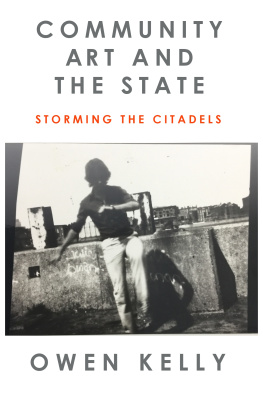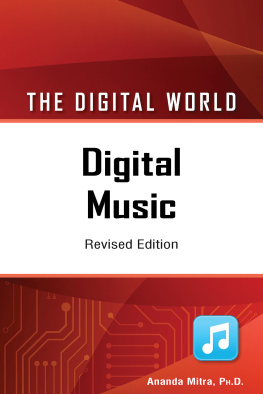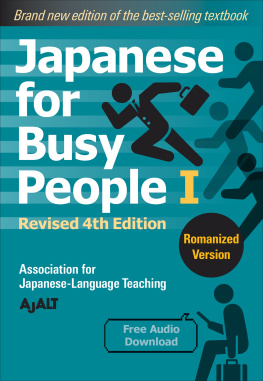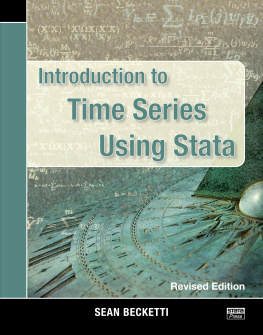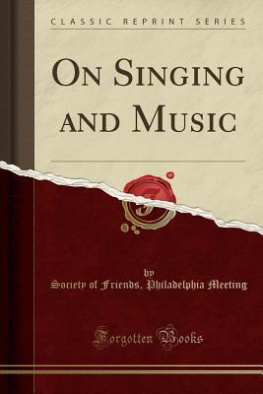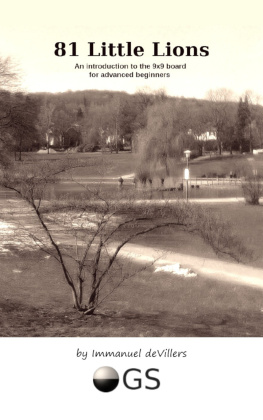Owen Kelly - Community, Art and the State
Here you can read online Owen Kelly - Community, Art and the State full text of the book (entire story) in english for free. Download pdf and epub, get meaning, cover and reviews about this ebook. year: 2016, publisher: Dib Dob Dob, genre: Politics. Description of the work, (preface) as well as reviews are available. Best literature library LitArk.com created for fans of good reading and offers a wide selection of genres:
Romance novel
Science fiction
Adventure
Detective
Science
History
Home and family
Prose
Art
Politics
Computer
Non-fiction
Religion
Business
Children
Humor
Choose a favorite category and find really read worthwhile books. Enjoy immersion in the world of imagination, feel the emotions of the characters or learn something new for yourself, make an fascinating discovery.
- Book:Community, Art and the State
- Author:
- Publisher:Dib Dob Dob
- Genre:
- Year:2016
- Rating:4 / 5
- Favourites:Add to favourites
- Your mark:
- 80
- 1
- 2
- 3
- 4
- 5
Community, Art and the State: summary, description and annotation
We offer to read an annotation, description, summary or preface (depends on what the author of the book "Community, Art and the State" wrote himself). If you haven't found the necessary information about the book — write in the comments, we will try to find it.
Community, Art and the State — read online for free the complete book (whole text) full work
Below is the text of the book, divided by pages. System saving the place of the last page read, allows you to conveniently read the book "Community, Art and the State" online for free, without having to search again every time where you left off. Put a bookmark, and you can go to the page where you finished reading at any time.
Font size:
Interval:
Bookmark:

Comedia Series No 23
Community, Art and the State
storming the citadels
Owen Kelly
First print edition: Comedia, 1984
First digital edition: Dib Dib Dob, 2016
Copyright Details
Comedia Publishing Group was set up to investigate and monitor the media in Britain and abroad. The aim of the project is to provide basic information and analysis, to investigate problem areas, and to encourage debate about the future of the media. The opinions expressed in this book are those of the authors, and do not necessarily reflect the views of Comedia.
Comedia and Owen Kelly 1984
First hardback edition published in English in 1984 by Comedia Publishing Group.
First digital edition published in 2016 by Dib Dob Dob
The digital edition is published under a Creative Commons CC BY-SA 4.0 Licence.
This is digital version 1.0.0
Acknowledgements
This book has grown out of my work, over the last five years, with Mediumwave, a community arts group based in Lambeth, in South London. I would like to thank Hania Janiurek and Kevin Nessling, the other two members of the group, for their support and encouragement and their willingness to see this book as a part of our work.
The arguments in this book have their beginnings in two pamphlets written jointly by Dermott Killip and myself, while he was a member of Mediumwave. I am indebted to Dermott for allowing me to develop the arguments in these pamphlets, and for continuing to provide invaluable advice and assistance even when he disagreed with the direction in which the arguments were being developed. Without him this book would not have been written.
I would like to thank Peter Brinson, Phil Cope, Rod Henderson, Sheila Henderson, Andrew Howard, Karen Merkel, Dave Morley and Ken Worpole, who offered specific criticisms of previous drafts, and advice as to how they could be improved. Some of it I ignored. Most of it I didn't.
I would like to thank Sue Burd for her help, encouragement and tolerance. Without her this book would never have been finished.
Finally, I am grateful to the Calouste Gulbenkian Foundation for providing a grant which enabled me to undertake the necessary research, and for doing so in a way which was in accordance with the aims of the project.
Preface
I wrote this book thirty years ago as a contribution to a debate about the nature and possibilities of cultural activism. Since then a few people have contacted me every year to ask where they could find a copy because, in one way or another, they believe that the arguments I raised still have some life in them. Every time I have promised myself that I would find a way to make it available again, and now I have decided to make it available as a Creative Commons licensed e-book. This means that you can do what you want with it as long as you include the proper attributions and use the same licence in your version.
I have done this because I have come to believe that the arguments about cultural democracy still resonate, and we should still try to find ways to act upon them. I have also done it because I have only one paper copy left and I wish the ideas to remain alive.
I wrote Community, Art and the State before I had a computer with a word processor. In 1984 I had not even seen an Apple Macintosh. I have therefore had to retype this from my one remaining paper copy and this has posed a dilemma. Should I change the text or not? The book contained a whole load of proof-reading errors, including one where a proof reader insisted that David Harding should be rechristened David Hockney, even after I had corrected the "correction". It also contained some grammatical errors and a few sentences that failed to communicate what I had intended. I decided to correct all of these but to go no further.
I have resisted the temptation to apply hindsight to the rewriting or to update the examples. I assumed a lot about contemporary technology in the book, and made much of the importance of community darkrooms and printshops. A lot of the technology of the 1980s has been superceded and now lies forgotten. The problems of a community trying to make its voice heard are different today than they were thirty years ago. Crudely speaking, the difficulty today does not lie in getting a message published but rather in attracting an audience to whatever you have published. In a world in which twelve year olds have YouTube channels, getting your message out to the public seems less of a problem that attracting a public to the channels you have created to house your message. This change needs to be discussed, and to this end I have contributed a chapter to a book that Alison Jeffers and Gerri Moriaty are editing on the differences between community arts and cultural activism in the 1980s and now. This book, Culture, Democracy and the Right to Make Art , should be published in summer 2017.
I have, however, decided to replace the cover. I disliked the original cover design from the moment I first saw it. Comedia had commissioned a set of covers for a series of books, and the one for this book seemed to bear no relationship to the arguments and ideas I hoped it contained. I have finally replaced it with a pinhole self-portrait taken in 1984 as part of a Mediumwave research project that contrasted pinhole portraits of people in motion with similar portraits of the same subject taken with a plate camera. Whether or not it makes for a "better" cover, it at least has some relevance to the ideas discussed in Chapter 9.
Owen Kelly,
Helsinki, Finland,
January 2014
Introduction
This book is concerned with the growth of a community arts movement in Britain during the last fifteen years. Community arts began as one strand of activism among many, during the late 1960s, and community artists claimed to share the political, social and cultural goals of those other movements: the underground press, organised squatting, free festivals, the yippies and the Black Panthers. Yet I believe that community artists have, in the main, moved away from these goals, and are now further away from achieving them than ever. The community arts movement faces several major problems, which it has consistently failed to confront. If it does not face these soon, it will become just one more worthy branch of whatever this government chooses to leave of the welfare state. Meals on wheels, homemade scones, inflatables and face painting: the kindly folk who do good without ever causing trouble.
Community arts is a general term for a group of cultural activities which the practitioners recognise as having common features but whose precise boundaries remain undrawn. The activities referred to usually include mural painting, community photography, printing, community festivals, newsletters, drama, video projects and the like. However, not all examples of the above would be recognised by all community artists as community arts. The community arts advisory panel of the Greater London Arts Association has produced a policy paper which contains a provisional definition of community arts, which it calls its 'terms of reference'. This will serve as a starting point to indicate the field with which this book will be concerned.
This paper says that
the term community arts does not refer to any specific activity or group of activities; rather it defines an approach to creative activity, embracing many kinds of events and a wide range of media... The approach used in community arts enjoins both artists and local people within their various communities to use appropriate art forms as a means of communication and expression, in a way that critically uses and develops traditional arts forms, adapting them to present day needs and developing new forms. Frequently the approach involves people on a collective basis, encourages the use of a collective statement but does not neglect individual development or the need for individual expression... Community arts proposes the use of art to effect social change and affect social policies, and encompasses the expression of political action, effecting environmental change and developing the understanding and use of established systems of communication and change. It also uses art forms to enjoy and develop people's particular cultural heritages... Community arts activists operate in areas of deprivation, using the term "deprivation" to include financial, cultural, environmental or educational deprivation.
Font size:
Interval:
Bookmark:
Similar books «Community, Art and the State»
Look at similar books to Community, Art and the State. We have selected literature similar in name and meaning in the hope of providing readers with more options to find new, interesting, not yet read works.
Discussion, reviews of the book Community, Art and the State and just readers' own opinions. Leave your comments, write what you think about the work, its meaning or the main characters. Specify what exactly you liked and what you didn't like, and why you think so.

